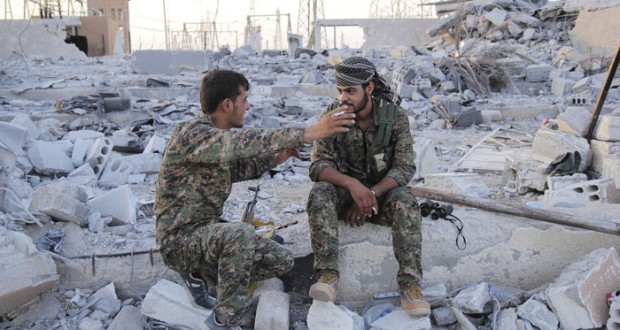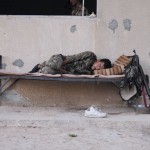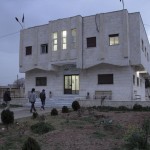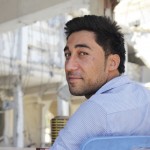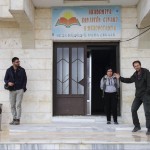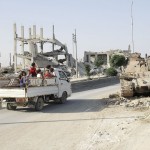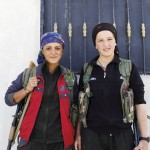After four and a half years of war, the Syrian society and infrastructure are in shambles, including the educational system and the dreams of the country’s students. But in some places, the hope still lives, and in the north east, libertarian development projects are popping up that question the purpose of higher education.
The war in Syria has turned into one of our time’s biggest catastrophes. The destruction of infrastructure and cities is enormous, and at least a quarter of a million people have been killed while around 12 million people are forced to run in what is the largest refugee crisis since the Second World War. No one knows yet how or when it will end.
The Syrian society is shaken to its core and has turned normal people into scarred war veterans or bloodthirsty oppressors. Some of these people are students. Many have seen their dreams and schools smashed to pieces. Opportunities to study have been crushed, literature and essays have been lost and many have not been able to get their degree. It is a disastrous situation for the studying generation, as well as for the future of the country – if there is one.
Today, many students have found new roles on the country’s battlefields.
“I’ve studied a whole year of medicine”, says a proud young man, who today works as a doctor and stitches up people who have been shot or stepped on landmines.
Many of those who now work as translators for international journalists used to study English literature, media and communication or something else that qualifies them for the job. In February, when I was held captive in Damascus by the regime’s largest security services, I met 28 year old Aleppo who was one of the guards. He was studying political science and writing his bachelor thesis while working on the side as a torturer and interrogation assistant to the secret services.
Despite the destructive war, there are still numerous universities open in Syria. Courses are still given in Damascus, Latakia, Homs, Hama, Tartus and other cities. But they are areas controlled by the regime that have, because of the situation today, become even more dangerous than before.
Some of the students who are, after all, studying are trying to finish their studies as fast as possible so they can bring their degrees with them as they flee the country. Other students purposely fail in order to extend their time studying and not get called to serve in the military.
Some students have already been called into service and have to carefully stay away from both schools and areas controlled by the regime in order to avoid being sent to the army.
“I studied journalism at The University of Damascus, and I was only a few points away from getting my degree”, Serbest Ali, 30 years old, tells me.
By the end of 2011, the capitol had become very dangerous. The last memory Serbest has from there is of the regime’s helicopters flying low above him and his friends while shooting at the Free Syrian Army in front of them. Afterwards, he immediately fled to his family in Kobane and has never returned.
“I lost everything from the university – I have no certificates or grades left. And I can’t return to any university either, then I will immediately be forced to serve in the military.”
That very thing happened to many of his university friends. Instead, Serbest has been forced to stay in his hometown of Kobane, which today lies in ruins. At the end of July, he was lying pressed up against a wall, while fighters belonging to IS prowled on the other side. Serbest survived, but 251 civilians were killed in the attack.
But not everything is darkness and horror in Syria. In the north east, there is an independent education project for those who, despite the war, want to study. On the outskirts of the city of Qamishlo is a group of buildings that used to belong to the Assad regime’s agricultural ministry. Now there are new signs on the buildings: The Academy of Sociology and History, The Academy of the Kurdish Language and The Academy of Human Rights and Law. It looks like a campus area and the name of it all is The Mesopotamian Academy. The name comes from the ancient country of two rivers that was located in this very place.
“Mesopotamia is the birthplace of civilization and we are working on the same project here today”, says the sociology teacher Rojda Firat, one of the people responsible for the project.
Down the corridors there are lecture halls, kitchens and communal bedrooms for students, computer labs and a small library. It does not cost anything to study there. Since the academy’s founding in spring 2013, over 300 people have been educated here, in programs that span over a year.
The project started in the autonomous region of Rojava, which Kurds and allies have developed in the northern parts of Syria, after the Assad regime had, to the most part, left the area in 2012. The Academies were opened in order to offer an education to people who could not reach the state universities because of the war.
But the initiative is also a stepping stone for new forms of education that questions the purpose of higher education. All students begin by taking an interdisciplinary course in world history and political science, with examples of juridical systems in ancient as well as modern times. The purpose is to learn from history and identify what it is that has gone wrong in the crumbling Syrian state compared to other states.
“And when students start here, we explain that the aim isn’t just to study and graduate”, Rojda Firat says.
“The aim is to discuss as equals, dissolve old hierarchies at universities and to sometimes switch the roles of teacher and student”, she says.
I then walk to today’s lesson and watch this system in practice. The project is still relatively small and active in an area where violence only seem to increase, amongst other things because of the cooperation between Kurds and YPG. But what the people, those who stay and do not run, really need is initiative that brings stability and hope of a change in society – even the radical kind, according to Rojda Firat.
“We must fight with one hand and educate our people with the other one.”
Text and photo: Joakim Medin
Translation: Emily Eriksson

